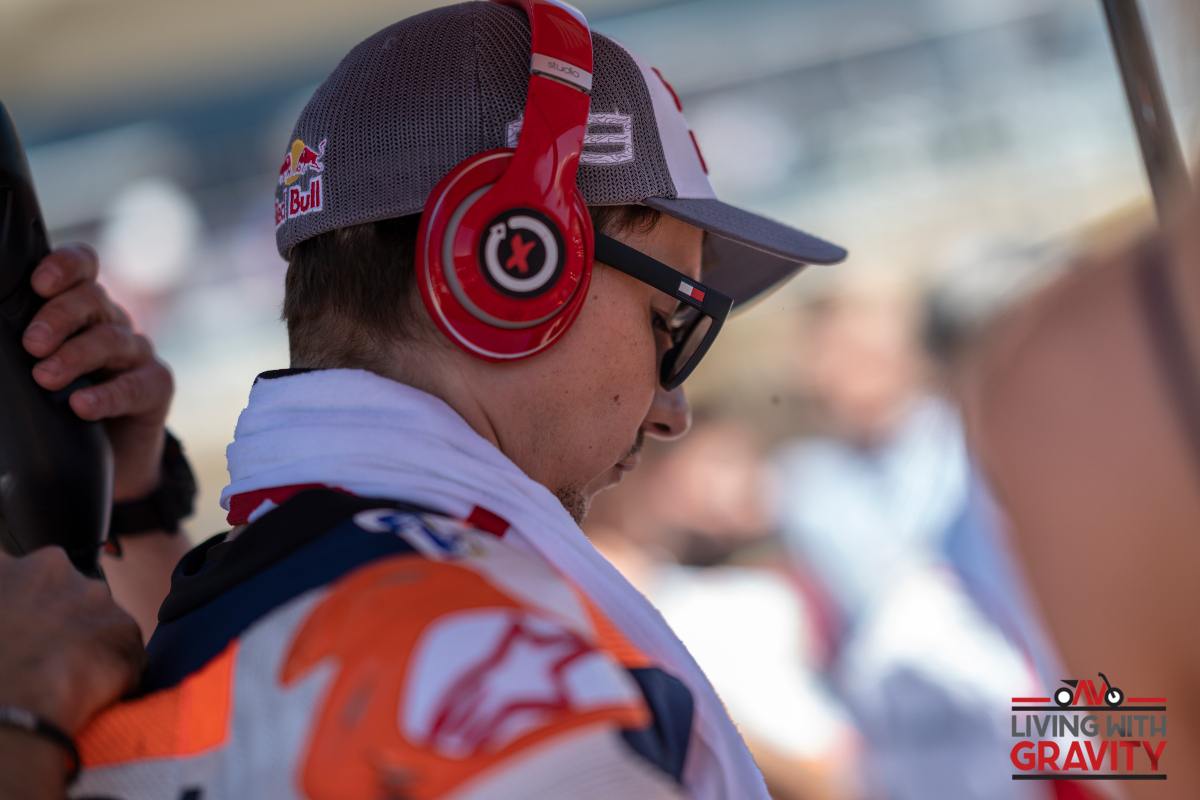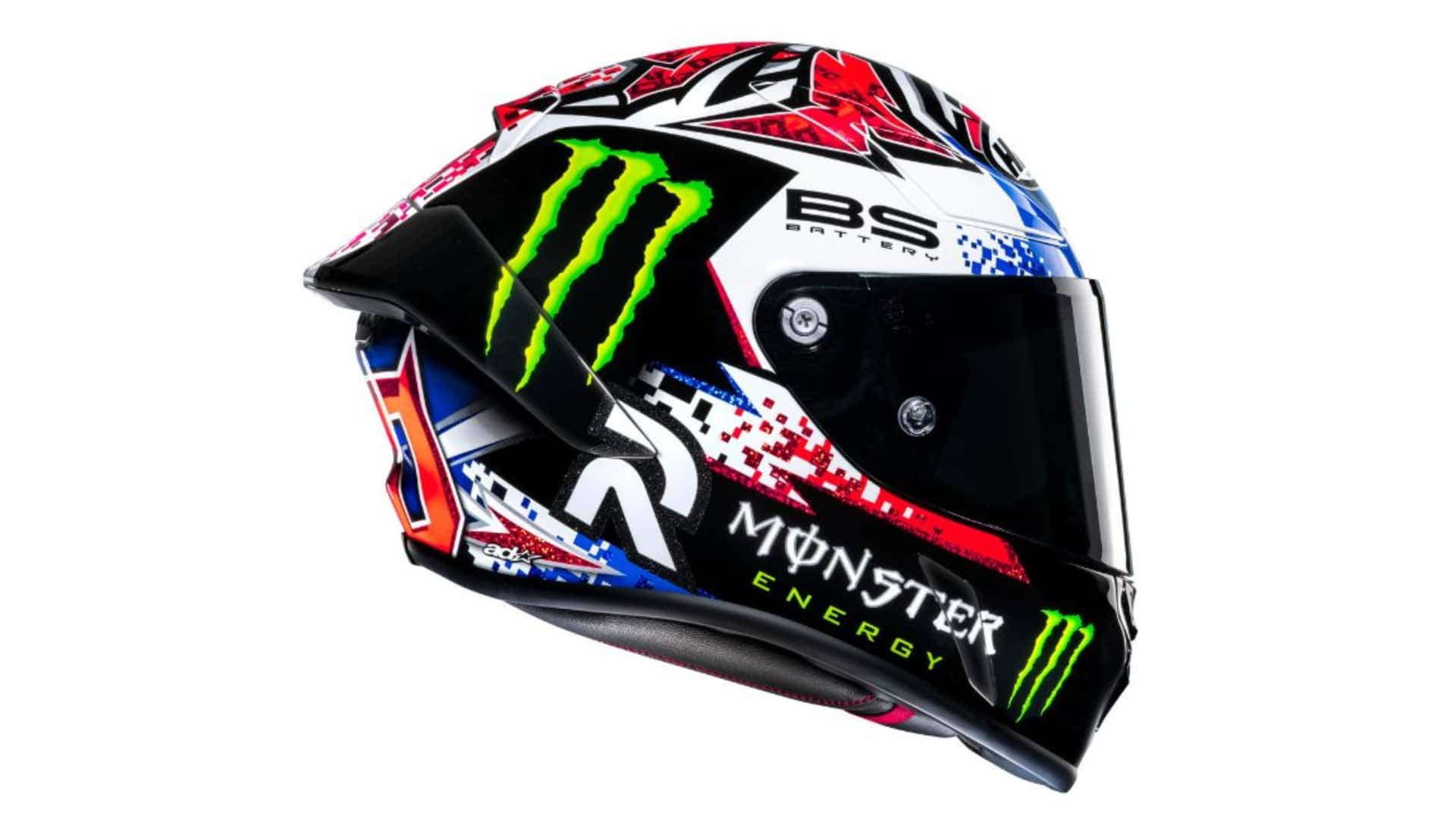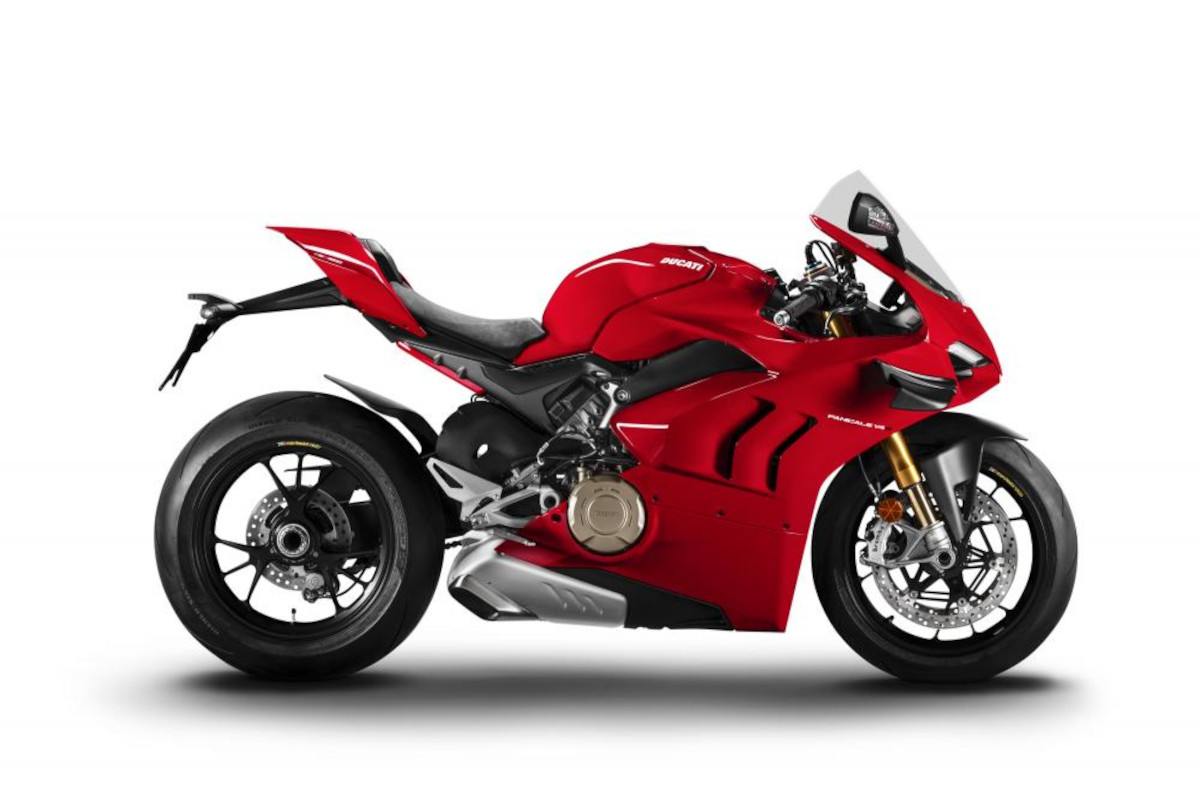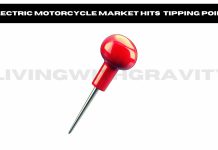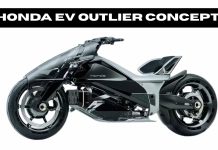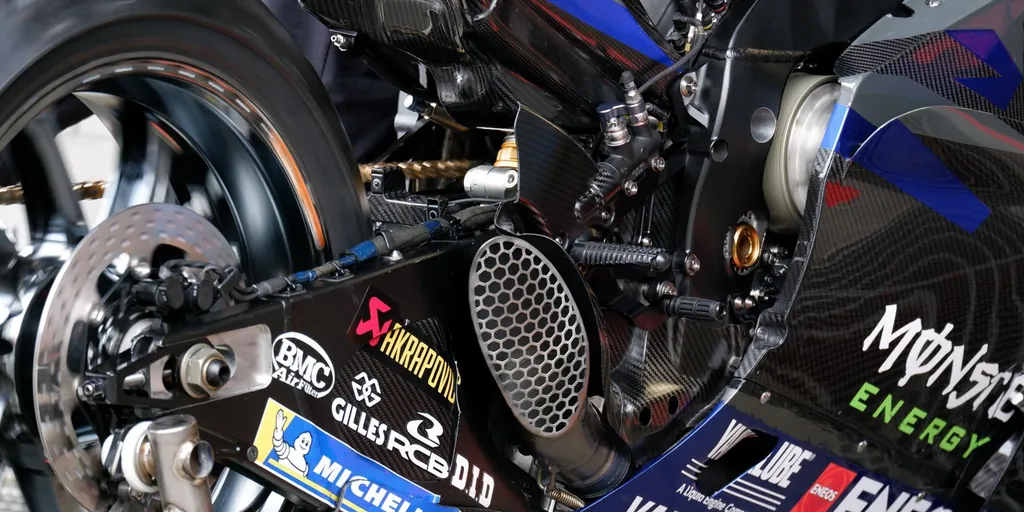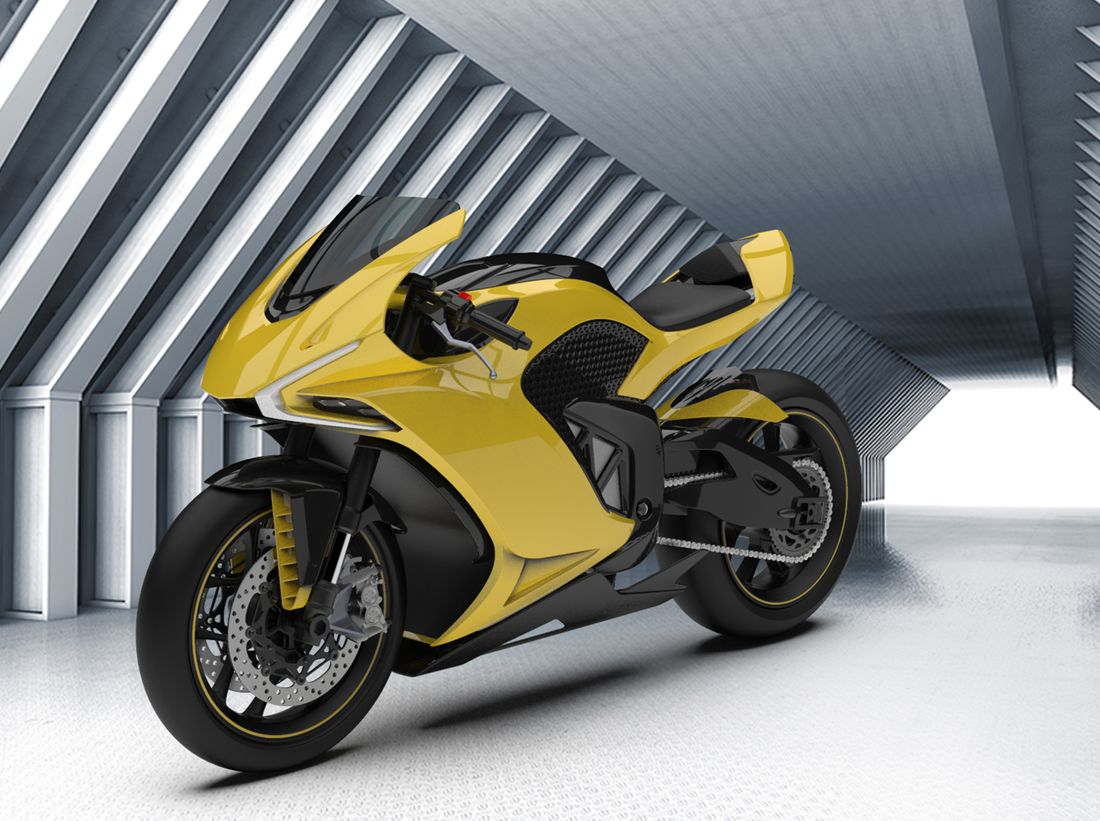1. Introduction: The End of an Era, The Dawn of a V4
Yamaha, a brand long synonymous with the inline-four engine in both its high-performance racing machines and its widely popular road-going motorcycles, is embarking on a monumental engineering and strategic shift: the development of a V4 engine for its M1 MotoGP race bikes. This decision has sent ripples of surprise across the motorsports world, challenging decades of established engineering philosophy and deeply ingrained brand identity . For many purists and long-time Yamaha riders, the confirmation of plans to work on a V4 concept was met with astonishment, given the company’s famed reliance on inline-four power units.
The company’s deep-seated association with the inline-four configuration has been a cornerstone of its engineering and marketing for decades, shaping the very perception of a Yamaha motorcycle. The move away from this defining characteristic highlights a critical juncture for the manufacturer. Despite this strong, established brand identity, the decision to pivot to a V4 configuration underscores a pragmatic acknowledgment that current performance deficits and competitive pressures in MotoGP have become so severe that they now outweigh the historical brand association and any potential backlash from loyalists.1
This is not merely an engineering adjustment; it represents a profound cultural and strategic transformation for Yamaha, signaling a willingness to break from tradition in pursuit of future success. It reflects a pragmatic approach that prioritizes winning at the highest level of motorsport over adherence to a particular engine type.
This report will delve into the profound implications of this strategic pivot. It will analyze the compelling reasons behind this change, detailing the inherent advantages of the V4 layout in the contemporary MotoGP landscape. Furthermore, the report will examine the progress of Yamaha’s V4 development trajectory and, crucially, explore the anticipated “trickle-down effect” that could redefine its consumer motorcycle lineup, mirroring the successful strategy employed by competitors such as Ducati.
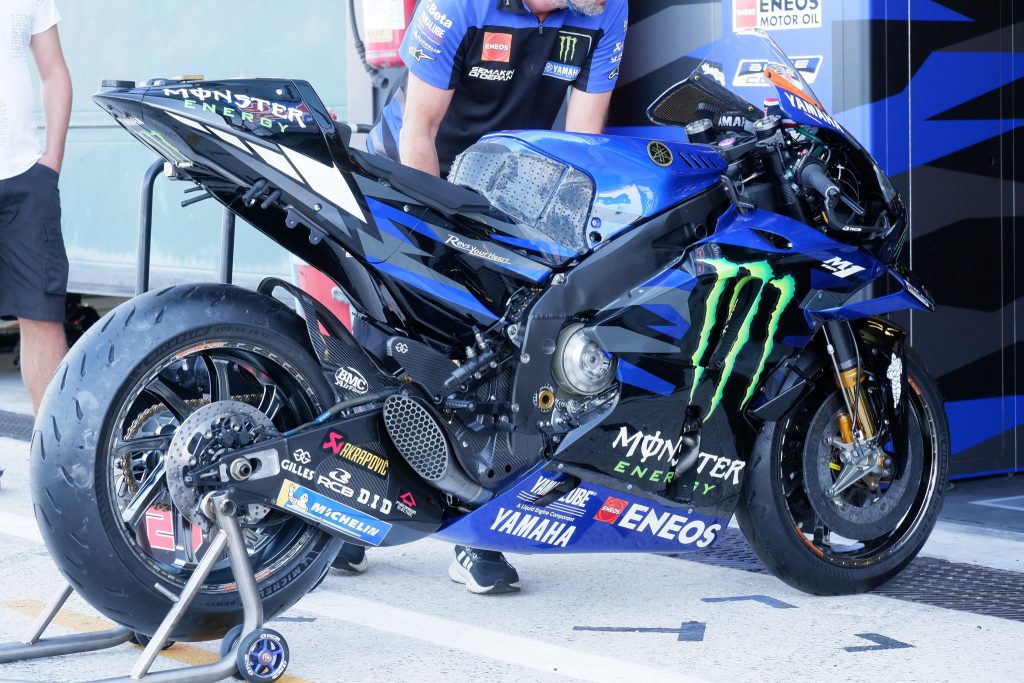
2. The V4 Advantage: Why MotoGP Demands a New Configuration
The competitive landscape of MotoGP has undergone a demonstrable shift, with V4 engine configurations now overwhelmingly dominating the grid. Yamaha’s decision to transition from its long-standing inline-four is a direct and necessary response to this evolving competitive environment, driven by the inherent engineering superiorities of the V4 layout.
Dominance on the Track: Statistical Evidence of V4 Success
The statistical evidence of V4 engine dominance in recent MotoGP seasons is compelling and irrefutable. V4-powered MotoGP bikes have achieved remarkable success, securing victory in 44 of the last 50 MotoGP races, which translates to an 88% win rate. Furthermore, these machines have topped the speed charts in 47 of the last 50 races, demonstrating a 94% success rate in raw speed.2 This overwhelming performance gap is further underscored by the fact that an inline-four engine has not won a single MotoGP race since 2022.3
Currently, Yamaha stands as the sole manufacturer utilizing an inline-four-cylinder engine in MotoGP. All other competing manufacturers—Ducati, Honda, KTM, and Aprilia—have adopted and continue to run V4 configurations.1 The 2023 season win by the Ducati V4 officially cemented the V4 as the most successful engine configuration in MotoGP history.4 This clear and consistent performance gap directly translates into a significant competitive disadvantage for Yamaha, rendering their V4 development not just an option, but a strategic necessity to remain relevant and competitive at the pinnacle of motorcycle racing. The market has delivered a clear signal: the inline-four, despite its historical successes, has reached its competitive ceiling in this specific racing environment. This shift represents a tacit acknowledgment by Yamaha that their long-defended inline-four concept, while once a formidable force, is no longer viable for championship contention against the V4-dominated European marques. This situation also highlights a cultural difference in development philosophies, where Yamaha, historically favoring evolutionary changes, is now compelled to adopt a more revolutionary approach to catch up.5
To illustrate the competitive landscape, the following table provides a snapshot of current MotoGP engine configurations and their performance standing:
Table 1: MotoGP Engine Configurations & Performance Metrics (Current Grid)
| Manufacturer | Engine Configuration | Key Performance Characteristics | Recent Race Wins (Last 50 Races) | Top Speed Dominance (Last 50 Races) | Concession Status (2024) |
| Ducati | V4 | Shorter Crankshaft, Less Friction, Better Pumping Losses, Firing Order Flexibility, High Power, Excellent Acceleration | 44 (88% of V4 wins) | 47 (94% of V4 top speeds) | A |
| KTM | V4 | Shorter Crankshaft, Less Friction, Better Pumping Losses, Firing Order Flexibility, High Power, Excellent Acceleration | Included in V4 wins | Included in V4 top speeds | C |
| Aprilia | V4 | Shorter Crankshaft, Less Friction, Better Pumping Losses, Firing Order Flexibility, High Power, Excellent Acceleration | Included in V4 wins | Included in V4 top speeds | C |
| Honda | V4 | Shorter Crankshaft, Less Friction, Better Pumping Losses, Firing Order Flexibility, High Power, Excellent Acceleration | Included in V4 wins | Included in V4 top speeds | D |
| Yamaha | Inline-4 | Better Corner Speed, Mass Centralization, User-Friendly Handling | 0 (None since 2022) | Less frequent | D |
Engineering Superiority of the V4
The V4 engine configuration offers a multitude of engineering advantages that contribute to its superior performance in MotoGP:
- Crankshaft Benefits: A V4 engine features a significantly shorter crankshaft compared to an inline-four. This inherent shortness makes the crankshaft stiffer and stronger, allowing it to withstand higher stresses. Furthermore, a V4 typically runs on three main bearings, in contrast to the minimum of five required by an inline-four, which substantially reduces internal friction.2 This shorter crankshaft also results in less rotational inertia, a characteristic that aids in quicker turn-in during cornering maneuvers.7
- Reduced Pumping Losses and Improved Engine Breathing: At high engine speeds, such as 18,000rpm, a 1000cc engine can flow up to 300 liters of air per second. The V4 crankcase layout is inherently more efficient at managing this massive airflow than an inline-four, leading to fewer power losses through “pumping losses” – the energy expended by the pistons moving against air pressure within the crankcase.2 V4 engines can also be designed with two separate crankcase chambers, each requiring only one scavenge pump to evacuate air and oil, creating a vacuum that further reduces internal drag. In contrast, an inline-four typically requires four such pumps, resulting in a parasitic power drain of approximately 2.5-3%.2
- Enhanced Power Delivery, Higher Revs, and Horsepower Potential: The combination of a stronger crankshaft, inherently reduced vibration, and superior balance in a V4 design allows engineers to push the engine harder, achieving higher revs and consequently more horsepower.2 Generally, V4 engines are observed to produce more power across a wider range of the rev band.8
- Superior Balance and Firing Order Flexibility: A 90-degree V-configuration, widely adopted by manufacturers like Ducati, Honda, KTM, and Aprilia, offers perfect primary balance. This eliminates the need for a countershaft, a component that would otherwise add weight and absorb power, thus allowing for a lighter and more efficient engine.2 This configuration also provides designers with greater flexibility in experimenting with unbalanced firing orders, such as “big bang” or Ducati’s “Twin Pulse” (which mimics a twin-cylinder firing sequence). These varied firing orders can be tuned to produce a more rider-friendly type of power and torque delivery, enhancing traction and control.2
- Aerodynamic and Packaging Advantages: V4 engines are inherently narrower than inline-fours, which can contribute to a slimmer, more nimble motorcycle design.8 While historical advantages in narrowness have somewhat diminished due to factors like radiator size becoming a limiting factor in overall width 6, the V-shape still offers greater flexibility in packaging. This allows for adjustments to engine parameters like bank angle and offset, potentially leading to a lower and narrower overall ride height, which can benefit mass centralization and aerodynamic efficiency.5
The cumulative effect of these interconnected engineering advantages creates a superior platform for extracting maximum power and delivering it effectively on a race track. This is particularly evident in straight-line speed and acceleration, which are critical for overtaking maneuvers.6 Yamaha’s adoption of the V4 is therefore not simply about changing an engine type, but about fundamentally re-optimizing the entire motorcycle around these inherent V4 benefits to compete on an equal footing. This represents a holistic re-engineering challenge for the manufacturer.
The following table provides a detailed comparison of key technical and performance attributes between V4 and inline-four engines:
Table 2: V4 vs. Inline-Four: Comparative Technical & Performance Attributes
| Attribute | V4 Characteristics | Inline-Four Characteristics | Impact on MotoGP Performance |
| Crankshaft Length/Stiffness | Shorter, stiffer, stronger 2 | Longer, more prone to flex 2 | V4: Allows higher revs, more power, less vibration. Inline-4: Can lead to power limitations. |
| Main Bearings | Runs on 3 main bearings 2 | Requires minimum of 5 main bearings 2 | V4: Less friction, more power recovered. Inline-4: More friction, higher parasitic losses. |
| Pumping Losses | Better crankcase flow, 2 scavenge pumps, fewer losses (2.5-3% gain) 2 | Poorer crankcase flow, 4 scavenge pumps, greater losses 2 | V4: More power recovered, higher efficiency. Inline-4: Power lost to internal air resistance. |
| Primary Balance | Perfect primary balance (90° V), no countershaft needed 2 | Requires balance shaft for secondary balance, adds rotating mass 11 | V4: Lighter engine, less vibration, more power to wheels. Inline-4: Added complexity/weight for smoothness. |
| Firing Order Flexibility | Greater variety of unbalanced firing orders (e.g., “big bang,” “twin pulse”) 2 | Limited flexibility in firing order to mimic V4 characteristics 5 | V4: More rider-friendly power delivery, better traction. Inline-4: Can struggle with power delivery characteristics. |
| Packaging/Width | Generally narrower, allows for slimmer bike, more chassis flexibility 8 | Wider, can limit throttle body size/aerodynamics 6 | V4: Aids aerodynamics, allows for more agile chassis design. Inline-4: Can compromise aero and power potential. |
| Corner Speed | Less fast in corner itself, quicker turn-in/out 6 | Superior corner speed due to mass centralization, helps maintain line 2 | V4: Focus on straight-line speed out of corners. Inline-4: Excels in clear track cornering, but can be boxed in. |
| Straight-line Speed | Faster on straights, crucial for overtaking (e.g., 2mph advantage) 2 | Slower on straights, struggles with overtaking 2 | V4: Enables drafting, out-braking, critical for race wins. Inline-4: Disadvantage in race situations. |
| Heat Management | Rear cylinders can generate significant heat in crucial areas 6 | Generally less concentrated heat issues | V4: Requires careful design to manage heat. Inline-4: Simpler heat dissipation. |
| Complexity/Cost | More complex (two heads, two sets of cams, complex exhaust), more expensive to produce/maintain 7 | Relatively affordable to produce, easy to maintain, tried and tested 8 | V4: Higher R&D and production costs. Inline-4: Cost-effective for road bikes. |
| Reliability | Can be perceived as more delicate 6 | Generally seen as lasting longer 6 | V4: Requires robust engineering for race durability. Inline-4: Proven durability for road use. |
Inline-Four’s Strengths and Limitations
While V4s dominate, inline-fours possess distinct strengths. Bikes like Yamaha’s YZR-M1 and Suzuki’s GSX-RR can be faster when track layouts allow them to exploit their superior corner speed, a benefit derived from easier packaging and better mass centralization.2 The longer crankshafts of inline-fours also contribute to motorcycle stability, aiding handling.4 This configuration is often more user-friendly in corners, and the extra crankshaft gyroscopic effect helps riders maintain their line once tipped into a corner.6
However, the competitive landscape has evolved, shifting the balance of performance factors. Despite their cornering prowess, inline-fours struggle to convert this into race wins because overtaking is significantly easier on straights than in corners.2 V4s consistently demonstrate enough straight-line speed advantage—for instance, a 2mph (3.5km/h) lead over inline-fours at tracks like Qatar and Mugello—to make a crucial difference in races, enabling riders to catch drafts and execute out-braking maneuvers.2
Furthermore, Yamaha’s riders, notably Fabio Quartararo, have voiced concerns that the M1 no longer handles with its accustomed agility, specifically struggling with rear grip and turning, despite its historical strengths in these areas.1 Some analyses suggest that Yamaha’s perceived power deficit is, in fact, a grip issue, where attempts to increase power in testing have inadvertently worsened drive grip, thereby hurting corner exit speed and making the bikes appear underpowered.5
Aerodynamic developments in MotoGP have also played a role in this shifting dynamic. The wider nature of inline-fours makes it challenging to incorporate larger throttle bodies and induction trumpets for more power without compromising aerodynamic performance.6 Modern aero packages also tend to favor harder-accelerating V4s by effectively keeping the front end down during acceleration.5
This confluence of factors means that the traditional strengths of the inline-four—corner speed and handling—are no longer sufficient to overcome the V4’s power and acceleration advantages, particularly in race scenarios where effective overtaking is paramount. Yamaha’s current handling issues further erode their remaining competitive edge, making the engine change even more urgent. This signifies a fundamental shift in MotoGP’s performance paradigm, where raw power and acceleration, augmented by sophisticated aerodynamics, have become more critical than pure corner speed. Yamaha’s V4 move is therefore an adaptation to this new paradigm, rather than an attempt to force the inline-four into a role it is no longer suited for.
3. Yamaha’s V4 Development: A Cultural and Technical Transformation
Yamaha’s V4 project transcends a mere engine swap; it signifies a fundamental re-evaluation of its racing philosophy and a profound cultural shift within the Japanese manufacturer. This transformation is driven by a stark realization of the performance gap and the pressing need to align with the dominant European approach to motorcycle racing.
The Imperative for Change: Addressing Performance Gaps and Competitive Pressures
The imperative for Yamaha to change its engine philosophy stems directly from its recent performance in MotoGP. The company has not secured a race win of any kind since 2022, a period that clearly marks a transfer of the balance of power from Japanese manufacturers to their European counterparts.1 This decline in competitiveness has been openly acknowledged by key figures within the team. Fabio Quartararo, Yamaha’s star rider and the 2021 world champion, has explicitly highlighted that the top teams in MotoGP are all utilizing V4 engines, implicitly suggesting that Yamaha needs to explore this configuration to regain its competitive edge.7 Quartararo’s complaints about the M1’s handling, particularly its struggles with rear grip and turning, further underscore the urgency for a fundamental change in philosophy, as the bike no longer exhibits its traditional strengths in these areas.1
A significant factor contributing to Yamaha’s recent struggles has been identified as a “stubborn Japanese mentality” that historically favored incremental evolution over revolutionary changes.5 This approach, while perhaps fostering reliability and refinement, has proven insufficient against the rapid, aggressive development cycles of European manufacturers like Ducati. Yamaha has now come to the realization that it “will never beat Ducati by doing what it has always done”.1 The poor performance and rider dissatisfaction have thus forced a radical departure from their traditional, incremental development approach. The competitive success of European manufacturers with V4s, coupled with their more aggressive development cycles, has exposed the limitations of Yamaha’s long-held philosophy. The V4 project is a direct consequence of this intense competitive pressure, representing a strategic capitulation to the European model of rapid, fundamental change in pursuit of performance. This could have significant long-term implications for how Japanese manufacturers approach racing research and development, potentially signaling a broader shift away from purely evolutionary design.
Development Milestones: Testing and Rider Evaluation
Extensive development of the V4 engine has been underway, with various test riders, including Augusto Fernandez and Andrea Dovizioso, gaining hands-on experience with the prototype integrated into M1 race bikes. A crucial upcoming milestone in this development is the scheduled test by Fabio Quartararo at Misano in September. As Yamaha’s star rider and a former world champion, his feedback is paramount. His assessment will heavily influence the V4’s progression towards potential race adoption.
The V4 engine is currently undergoing rigorous dyno testing. While its reliability is not yet deemed sufficient for full race bike testing, the expectation is that it will be ready for on-track evaluation in the near future.7 Yamaha has publicly stated that it will only commit to using the V4 if it demonstrates a clear improvement over the current inline-four’s performance. However, the substantial level of investment that has undoubtedly taken place in this project strongly suggests that the switch is a highly probable outcome. This substantial investment implies a strong organizational commitment, making it highly improbable that the project would be abandoned unless the V4 proves to be a catastrophic failure. This investment creates powerful internal momentum towards adoption, suggesting that testing is primarily focused on optimization rather than a fundamental “go/no-go” decision. This also signals Yamaha’s confidence in the V4’s potential.
Beyond the Engine: The “New Motorcycle” Philosophy and Broader Shift
Yamaha’s V4 project extends far beyond a simple engine replacement. Paolo Pavesio, Yamaha’s Motorsport Director, has confirmed that the initiative is not merely about rebuilding an engine but about creating a “completely new motorcycle,” which necessitates a comprehensive setup for competition.13 This holistic approach signifies a recognition that the engine change demands a complete redesign of the chassis and other components to fully exploit the V4’s inherent advantages.
This strategic shift is also expected to “open the doors to other new avenues Yamaha was perhaps too afraid in the past to explore,” thereby aiding overall bike development across various aspects.1 The company has enlisted external expertise to facilitate this transformation. Luca Marmorini, a former engine chief for Toyota and Ferrari in Formula 1, has been consulting Yamaha on its engines since 2022, contributing to the M1’s increased power output.1 This infusion of external knowledge provides fresh perspectives and can accelerate the adoption of advanced engineering practices, potentially bypassing traditional internal resistance. This external influence, combined with the “new motorcycle” philosophy, indicates a deep-seated commitment to a holistic performance overhaul, not just a component swap. This approach suggests Yamaha is learning from its European rivals, who often integrate engine, chassis, and aerodynamic development more cohesively. It represents a strategic move to overcome the “Japanese mentality” of isolated component development, aiming for a more integrated, high-performance package. This could signify a broader shift in Yamaha’s R&D culture.
Future Trajectory: Wildcard Entries, Regulatory Alignment, and Concessions
Yamaha is strategically timing its V4 development to maximize current concession benefits and prepare for future regulation changes. The manufacturer aims to make a wildcard entry with the V4 engine “as soon as possible” this season.13 This early introduction via wildcard entries is critical, as it allows Yamaha to gather invaluable race-weekend data under competitive conditions, thereby accelerating the development process. The clear target is for the “current-spec” V4 to be ready for full-time racing in 2026.14
This proactive development also aligns with MotoGP’s upcoming regulatory shift to 850cc engines from 2027. By developing the V4 now for the 2025/2026 seasons, Yamaha should gain a significant head start, potentially allowing them to enter the new regulatory era with a mature V4 platform while rivals are still adapting.1 Furthermore, a rumored engine development freeze to see out the current regulation cycle would also favor Yamaha, provided it does not lose its current concession benefits due to improved results.1 Yamaha currently holds ‘D’ concessions, the lowest tier, which grants them additional testing opportunities—a critical enabler for this accelerated V4 development.1 This sophisticated, long-term strategic planning by Yamaha leverages current regulatory frameworks to position themselves favorably for future rule changes, indicating a proactive effort to regain a competitive edge rather than merely reacting to current deficits.
4. Trickle-Down Effect: From MotoGP Podium to Road Bike Pavement
One of the most significant implications of Yamaha’s V4 engine development in MotoGP is its potential “trickle-down effect” to its consumer road bikes. This phenomenon, where advanced racing technology finds its way into production models, has a rich history in motorcycling and promises to redefine Yamaha’s street-legal lineup.
The Racing-to-Road Pipeline: Historical Examples of MotoGP Technology Transfer
The concept of “trickle-down effect” from MotoGP to road bikes is well-established, with aerodynamic advancements cited as a clear precedent . MotoGP serves as a crucial, high-speed, high-stress testing ground for cutting-edge technologies that eventually find their way into consumer products. Historically, this transfer has been extensive, influencing not only complete vehicle design but also various aftermarket motorcycle parts. These include aero innovations such as winglets and fairings, lightweight materials like carbon fiber and titanium, advanced exhaust systems, high-performance braking components, sophisticated electronic aids (e.g., traction control, quick shifters, ECU tuning), suspension upgrades, and slipper clutches.15 Even as far back as the 1950s, aerodynamic fairings developed for racing found their way onto road bikes, enhancing both performance and rider comfort.16
The intense competitive pressure and significant investment in MotoGP compel rapid innovation across areas such as engine design, aerodynamics, electronics, and materials. These innovations, once rigorously proven and refined in the crucible of racing, can then be adapted and scaled for mass production, offering tangible performance and safety benefits to everyday riders. For manufacturers, MotoGP is thus not merely about brand prestige or marketing; it functions as a vital part of their product development cycle, allowing them to amortize substantial research and development costs across both their racing and consumer divisions. Yamaha’s V4 development fits perfectly into this established pipeline, promising future road bike innovations that will directly benefit from the lessons learned on the race track.
The Ducati Precedent: Leveraging V4 Racing Technology for Production Models
Ducati stands as a prime example of successfully leveraging MotoGP technology for its production models, particularly with its V4 engines . Newer models regularly receive engine updates or entirely new units that directly benefit from MotoGP-developed technology .
Ducati’s Panigale V4, for instance, is powered by the 1103cc Desmosedici Stradale engine. This 90° V4 unit incorporates MotoGP-derived features such as Desmodromic timing, a counter-rotating crankshaft, and a “Twin Pulse” firing order, which gives it a distinct sound remarkably similar to the MotoGP Desmosedici race bike.9 The 90° V-layout naturally balances primary forces, eliminating the need for a countershaft, a design principle directly carried over from MotoGP prototypes.9 Beyond pure sportbikes, Ducati has also demonstrated the versatility of the V4 by developing the V4 Granturismo engine for its “adventouring” models. This engine, inspired by the Desmosedici Stradale layout, emphasizes compactness, lightness, smooth power delivery, and significantly extended service intervals, showcasing the adaptability of the V4 concept across different motorcycle segments.10
Ducati has successfully forged a strong brand identity around its V4 engine, effectively leveraging its racing success to differentiate its road bikes in the market. By directly linking their production V4s to their dominant MotoGP program, Ducati creates a compelling narrative of cutting-edge performance, exclusivity, and race-bred technology for consumers. This strategy allows them to command premium pricing and attract enthusiasts who seek a direct connection to the racing world. The adaptability of the V4 for diverse segments, from high-performance sportbikes to versatile touring machines, further broadens its market appeal. Ducati thus provides a clear strategic blueprint for Yamaha: by adopting a V4 in MotoGP, Yamaha can not only improve its racing performance but also revitalize its road bike lineup, offering a new, exciting engine platform that directly benefits from racing research and development. This approach could attract new customers and re-engage purists with the exhilarating “roar of a V4”, potentially leading to a significant market repositioning for Yamaha.
Potential for Yamaha Road Bikes: Performance Benefits and Market Positioning
The prospect of Yamaha’s flagship models, such as the R1 or models from its MT range, being powered by a V4 engine is a source of considerable excitement among enthusiasts . For street bikes, V4 engines offer a unique blend of characteristics: they combine the tractability often associated with sporting V-twins, the raw power typically found in inline-fours, and a robust midrange torque delivery. This results in a powerband that offers good low-end grunt, an impressive midrange punch, and strong high-end power, coupled with excellent off-corner grip.12
While V4 engines can be more expensive to produce and maintain, and their rear cylinders can generate significant heat, their benefits in terms of power, higher rev ceilings, and distinctive sound are undeniably appealing to performance-oriented riders.8 It is important to note that for “normal rides,” road-legal bikes like the Yamaha R1, Kawasaki ZX10R, or BMW S1000RR (all inline-fours) do not
need a V4 engine. Inline-fours remain a tried, tested, compact, relatively affordable, and easy-to-maintain package for general road use.8 However, the “glory days” of the inline-four in the world of racing are undeniably in the past.8
A V4 engine also offers practical advantages for road bike design, including a narrower frontal profile and the ability to be compactly packaged into different shapes and bank angles for better weight balance and management.11 Therefore, while inline-fours will likely remain viable for many segments of Yamaha’s road bike lineup, particularly entry to mid-level offerings, a V4 engine would provide a distinct, high-performance, and premium offering for its flagship sport and hyper-naked models.
This would allow Yamaha to create a new tier of performance and rider experience, appealing to enthusiasts who prioritize cutting-edge technology, raw power, and a unique engine character. Such a move would enable Yamaha to compete directly with premium V4 offerings from rivals like Ducati and Aprilia, potentially commanding higher price points and significantly enhancing its brand perception. This is not necessarily about replacing all inline-fours in Yamaha’s road lineup, but rather about strategically diversifying and premiumizing its top-tier models. This dual approach could strengthen Yamaha’s overall market position by catering to both its traditional customer base and a new segment of high-performance enthusiasts.
5. Conclusion: Redefining Yamaha’s Future
Yamaha’s audacious pivot to a V4 engine in MotoGP marks a pivotal moment in its storied history. This strategic shift, born out of competitive necessity and a pragmatic embrace of engineering dominance, is poised to redefine not only its racing fortunes but also the character and market positioning of its future road bikes.
Summarizing the Strategic Importance of the V4 Shift for Yamaha’s Competitiveness in MotoGP
The V4 engine is no longer a mere concept but a “project in full swing” for Yamaha, with a clear target to race in 2026.13 This decisive move signals a genuine “softening of the stubborn Japanese mentality” that has historically favored incremental evolution. It reflects a profound realization that clinging to past approaches will not yield future success against the dominant V4-powered European manufacturers.1 The substantial investment and the commitment to developing a “completely new motorcycle,” rather than just an engine, underscore the depth of Yamaha’s ambition to regain championship form.13
fThis proactive, rather than reactive, stance indicates a renewed and significant commitment to winning at the highest level of motorsport. The V4 project is a direct response to the undeniable performance gap and the pressing need to align with the dominant engineering philosophy in MotoGP. This bold reassertion of racing ambition is a powerful signal to competitors, fans, and internal stakeholders about the company’s long-term aspirations.
Reiterating the Exciting Prospects for Yamaha’s Road Bike Lineup and its Brand Image
The “trickle-down effect” of MotoGP technology to road bikes is a proven and highly effective pathway for innovation.15 The potential for V4-powered R1 or MT models offers the promise of significantly enhanced performance, including superior power, torque, and a distinctive engine sound, akin to the success seen with Ducati’s V4 road bikes.9 This strategic move will enable Yamaha to offer a more diverse and premium range of motorcycles, appealing to a broader spectrum of riders. This includes purists who are eager for the “roar of a V4” and enthusiasts who prioritize cutting-edge performance and a unique riding experience.12
A successful V4 program in MotoGP will directly enhance Yamaha’s brand image as an innovator and performance leader, a perception that can be effectively capitalized on in its road bike division. The perceived “race-bred” technology in road bikes creates a powerful halo effect, boosting desirability and potentially increasing market share in the premium sportbike and hyper-naked segments. This allows Yamaha to compete more effectively against European rivals who have already established this strong link between their racing and production models. Beyond just sales figures, this move could fundamentally reshape Yamaha’s brand identity for the next generation of riders, moving beyond its traditional “inline-four purist” image to one of cutting-edge, high-performance versatility. This represents a significant investment in future brand equity.
Final Thoughts on Yamaha’s Potential Return to Championship Contention and Market Leadership
While the shift to a V4 engine will not instantly propel Yamaha to the top of the MotoGP standings, it unequivocally signals a genuine commitment to exploring new avenues for bike development and overcoming stagnation.1 By investing heavily now in a V4 platform and adapting its research and development culture, Yamaha is strategically positioning itself for sustained success in the evolving MotoGP landscape.
This foundational change is more impactful than incremental updates, as it addresses the root causes of their competitive deficit. Success in MotoGP with the V4 could pave the way for Yamaha to regain its competitive edge and potentially challenge for championships once again, solidifying its position as a top-tier manufacturer in both racing and the global motorcycle market. This move demonstrates foresight and adaptability, crucial traits for long-term leadership in a highly competitive industry. The success of this V4 revolution will ultimately be a testament to Yamaha’s ability to innovate and transform in the face of intense competition.
Sources
- Why Yamaha’s rumoured radical MotoGP shift is bigger than just an engine | Crash.net, accessed on July 14, 2025, https://www.crash.net/motogp/feature/1055428/1/why-yamahas-rumoured-radical-motogp-shift-bigger-just-engine
- Why are MotoGP V4s faster than inline-4s? – Motor Sport Magazine – Reddit, accessed on July 14, 2025, https://www.reddit.com/r/motogp/comments/es147i/why_are_motogp_v4s_faster_than_inline4s_motor/
- Why THIS Engine is DOMINATING in MotoGP – YouTube, accessed on July 14, 2025, https://www.youtube.com/watch?v=diQZIV8U0OI
- The Ultimate Guide to MotoGP Engines: Everything You Need to Know, accessed on July 14, 2025, https://www.intentsgp.com/ultimate-guide-motogp-engines/
- Why have Yamaha persisted with the inline 4-cylinder? : r/motogp – Reddit, accessed on July 14, 2025, https://www.reddit.com/r/motogp/comments/17pxiyl/why_have_yamaha_persisted_with_the_inline/
- Why V4 bikes are faster than in-line 4s – redridingboots, accessed on July 14, 2025, https://redridingboots.com/why-v4-bikes-are-faster-than-in-line-4s/
- Why Yamaha changes to V4 engine! – MotoGP EXPLAINED – YouTube, accessed on July 14, 2025, https://www.youtube.com/watch?v=SpfEHiqZS8Y
- Is the V4 engine only for racing? | V4 Disadvantages | Inline-Four vs V4 #ducati #motogp #racing – YouTube, accessed on July 14, 2025, https://www.youtube.com/watch?v=RztLHVeUKn0
- Engine Ducati Panigale V4, accessed on July 14, 2025, https://www.ducati.com/ww/en/bikes/panigale/panigale-v4/engine
- V4 Granturismo Ducati – A change of paradigm, accessed on July 14, 2025, https://www.ducati.com/ww/en/company/innovation/engines/v4-granturismo
- I4 vs V4 engine? : r/motorcycle – Reddit, accessed on July 14, 2025, https://www.reddit.com/r/motorcycle/comments/17wfdei/i4_vs_v4_engine/
- What’s the difference between a 1000cc V2 and V4? : r/motorcycles – Reddit, accessed on July 14, 2025, https://www.reddit.com/r/motorcycles/comments/oxtvm/whats_the_difference_between_a_1000cc_v2_and_v4/
- Yamaha will wildcard with its V4 engine ‘as soon as possible’ | BikeSport News, accessed on July 14, 2025, https://bikesportnews.com/motogp/yamaha-will-wildcard-with-its-v4-engine-as-soon-as-possible/
- Yamaha reveals ‘clear target’ for MotoGP 2026 – Motorsport.com, accessed on July 14, 2025, https://www.motorsport.com/motogp/news/yamaha-reveals-clear-target-motogp-2026/10741584/
- How MotoGP Technology Is Influencing Aftermarket Motorcycle Parts – Desmoheart, accessed on July 14, 2025, https://desmoheart.com/blogs/news/how-motogp-technology-is-influencing-aftermarket-motorcycle-parts
- The secrets behind MotoGP aerodynamics – AirShaper, accessed on July 14, 2025, https://airshaper.com/blog/the-secrets-behind-motogp-aerodynamics
Our Social Media Handles
- Instagram : LivingWithGravity
- Medium : Akash Dolas
- YouTube Channel : Gear and Shutter





